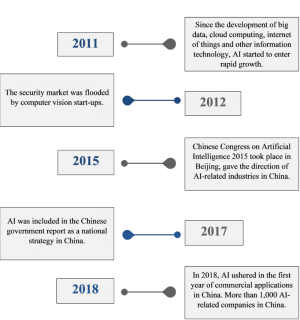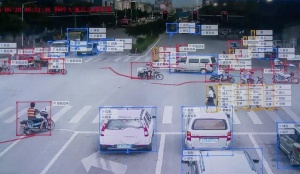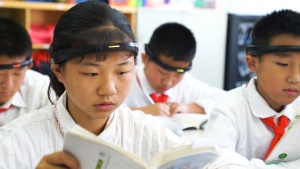Artificial Intelligence in China
Contents
Early History of AI
Stagnating Development
In the 1950s, China was faced with enormous damage from WWII and hence, did not have the resources to focus on the advancement of science and technology. Cybernetics was deemed as a bourgeois pseudoscience and many scientists rejected its influence. Then in the 1960s, political campaigns such as the Great Leap Forward and the Cultural Revolution led to steep economics declines, exiles of many intellectuals, and paralyzed education systems, which further led to the decline of technology and science advancement. The "Gang of Four", a powerful political faction in China, moreover criticized scientific theories such as Einstein's theory of relativity, Weiner's cybernetics, and the Big Bang Theory, preventing people from indulging in scientific and technological research. [1]
Turning Point
However in the 1970s, after the Gang of Four lost its power and the Cultural Revolution ended, the year 1978 became a turning point for the development of science and technology in China. The People's Republic of China held the first National Science Conference that year in Beijing to encourage the development of scientific and technological research. Deng Xiaoping, the leader of the People's Republic of China at the time, stressed in his opening remarks that science and technology were productive forces, and the key to China's modernizations was the modernization of science and technology. The first cybernetics and AI research project was proposed here as a result. [2]
Recent History
China is catching up fast with the US in the AI industry and one of its biggest reasons is its collaboration between the Chinese government, private sector, investors, and academia. With the government funding the industry through developing national AI research centers, adding university courses on AI, enforcing tax policies benefitting technology companies developing or adopting AI, and initiatives to attract more AI talent and projects, the government's top-down approach help propel its goals to be an AI superpower forward. Moreover, China's millions of online connected users and surveillance on its citizens establish the biggest consumer database that any institution can use to train its AI technologies. [3]
Plan for the Development of New Generation Artificial Intelligence
On July 20, 2017, the state council released an official Plan for the Development of New Generation Artificial Intelligence [4] - the first of its kind to address AI as a national strategy in China. It outlined goals to build a domestic AI industry worth 150 billion RMB in the next few years and become the leading AI power by 2030. As a result, more than 1000 AI companies in China pushed out its first commercial applications a year later and the State Council allocated 2.1 billion RMB on an AI industrial park in Mentougou district.
• By 2020, the government expects “its companies and research facilities to be at the same level as leading AI countries like the United States” and the technology to become an important driver for economic growth
• By 2025, there will be major breakthroughs for fundamental AI theories and China will become the world’s leading level for some sets of AI technologies. AI will be applied in most areas such as smart manufacturing, smart healthcare, smart cities, smart agriculture, and national defense
• By 2030, China will become the world’s leader and global center for all AI theories, technologies, and applications. AI will also be deeply integrated into most industries
AI Applications in China
China has world-leading companies in computer vision, speech recognition and natural language processing, including SenseTime, Unisound, iFLYTEK and Face++, says Zheng Nanning, director of the Institute of Artificial Intelligence and Robotics at Xi’an Jiaotong University. [5] But this is only the tip of the iceberg when it comes to how AI is applied and utilized in China.
Crime and Traffic Safety
The largest algorithm provider in China as well as the fifth-largest AI platform, SenseTime developed a facial recognition system called DeepID that lets China's police departments analyze video footage to catch criminals, track car plates to support traffic management, recognize traffic incidents to alert authorities, and track driver's motions to identify if they are falling asleep behind the wheel among many other applications.
Education
Squirrel AI
Over 1 billion RMB was invested in AI education in 2019. And one of these companies was Squirrel AI Learning, which uses adaptive learning - an education technology that can respond to a student's interactions in real-time by automatically providing the student with individual support online.[6] It uses AI to understand what learning materials a student is struggling with then provide them with ongoing support and learning materials until they master the subject. To do so, the company has opened over 1700 schools in more than 200 cities across China using this technology.
Cameras in Classroom
AI, brain wave trackers, and cameras are being installed in classrooms to enhance teaching methods and monitor students' attention levels. By using facial recognition technology, brain wave trackers, and a live platform for students to point out what they understand and don't understand in class, schools could design curriculum schedules around the students' attention patterns, better assess attendance, improve student engagement and learning activities, proctor exams, and enable educators to measure the effectiveness of their teaching methods. Parents are also getting live information about their children's learning patterns, attention levels, and engagement in class. [7]
Controversies and Ethics
AI in Education
With data about each student in the classroom, students and their families are worried about not knowing whether any of their data is being shared or what data thereof is being shared with their future schools and universities. Specifically, what if data about how focused each student was in class is shared with future schools, which could damage their chances of getting their dream education? This is an example of how privacy has been an ongoing issue with AI as not all technologies are transparent with what data they're sharing and what's not.
Face-Swapping
Zao, a face-swapping technology, first intended for users to swap their faces with friends and family for fun later posed a security threat to many of China's facial recognition payment systems as users could pose as other users to use their bank cards. [8]
==AI Governance Principles in China== [9]
Many AI technologies and applications were developed as a result of the national strategy but an ethics board to govern the rapid development was still not created yet. On June 17, 2019, China’s Ministry of Science and Technology published the first official Governance Principles for the New Generation of Artificial Intelligence. After several rounds of expert consultations and discussions, the Ministry’s New AI Governance Expert Committee proposed eight principles to ensure the development of responsible AI:
1. Harmony and friendship
AI must align with society’s values and ethics; misuses and abuses must be prevented and prohibited
2. Fairness and justice
AI must protect the interest of all stakeholders and promote equal opportunities; prejudice and bias must be eliminated in data acquisition, algorithm design, product research, technology development, and the application itself
3. Inclusiveness and sharing
AI must aim to enhance the well-being of humanity; AI education must be strengthened and accessible to disadvantaged people and industries; data and platform monopolies must be prevented and open cooperation is encouraged
4. Respect for Privacy
personal privacy should be respected and protected; privacy standards should be established for the collection, storage, processing, and use of personal information in all aspects of product development
5. Security and Controllability
the public should have the right to know what data is being shared and the right to choose what to share; AI development should be transparent and ways to supervise, manage, track, and monitor those systems should be developed
AI developers, users, and all stakeholders have the shared responsibility to respect laws, ethics, and norms; an accountability system will be developed to assess the role of each
7. Open Collaboration
interdisciplinary and cross border collaboration is encouraged and interactions in the development and governance of AI are promoted among the general public, research institutions, educational institutions, social organizations, enterprises, government departments, and international organizations
8. Agile Governance
management and governance systems will be constantly updated and improved throughout the AI product and services life cycle; research of potential risks related to the AI will be done to ensure it will continuously enhance the well-being of humanity
Future Plans
Overall, China is continuously investing in AI research domestically and globally - it has published the highest amount of AI research papers so far, but numbers show they’re cited significantly less than US and EU papers. Even so, China is investing in improving the quality of its AI research papers by pushing three initiatives: [10]
1) China’s New Generation AI Development Plan, which calls for China to have made significant breakthroughs in AI theory by 2025
2) The Chinese government has created research centers, including the Artificial Intelligence Research Center, which has more than 100 employees.
3) The Chinese Ministry of Industry and Information Technology plans to allocate $950 million annually to fund strategic AI projects.
References
- ↑ http://wangjieshu.com/2018/10/17/history_of_ai_in_china/
- ↑ https://www.chinadaily.com.cn/china/19thcpcnationalcongress/2011-03/18/content_29715461.htm)
- ↑ https://emerj.com/ai-market-research/ai-in-china-recent-history-strengths-and-weaknesses-of-the-ecosystem/
- ↑ http://chinainnovationfunding.eu/dt_testimonials/state-councils-plan-for-the-development-of-new-generation-artificial-intelligence/
- ↑ https://www.nature.com/articles/d41586-019-02360-7
- ↑ https://squirrelai.com/
- ↑ https://digitaledition.chicagotribune.com/tribune/article_popover.aspx?guid=11858e27-1f9d-434c-b53c-ab397b25e732
- ↑ https://www.cnbc.com/2019/09/06/ai-worries-about-the-dangers-of-facial-recognition-growing-in-china.html
- ↑ http://chinainnovationfunding.eu/dt_testimonials/publication-of-the-new-generation-ai-governance-principles-developing-responsible-ai/
- ↑ https://daxueconsulting.com/history-china-artificial-intelligence/



